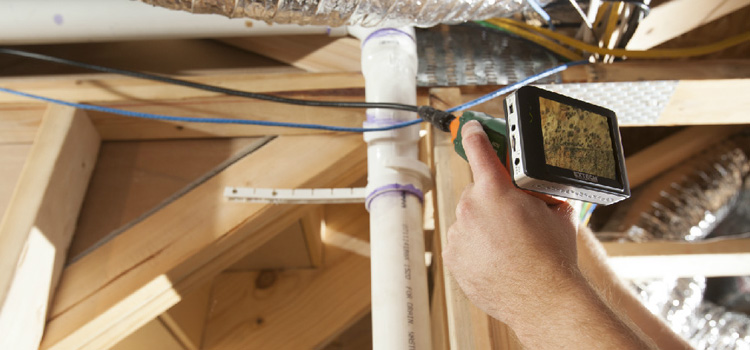Comprehensive Post Mold Remediation Procedures
Wiki Article
Your Ultimate Overview to Post Mold Remediation Methods
Navigating the realm of post-mold remediation techniques is a precise process that requires focus to detail and an extensive understanding of the complexities involved. In the aftermath of mold and mildew invasion, knowing how to properly get rid of the mold and mildew and avoid its reoccurrence is critical for maintaining a healthy interior setting. From choosing the best cleaning and disinfecting methods to implementing approaches for long-lasting mold prevention, each action in the removal trip plays an important function in making sure an effective end result. As we get started on this expedition of post-mold remediation techniques, we will discover the essential techniques and ideal methods that can help you recover your space to its pre-mold problem and secure it versus future mold and mildew risks.Recognizing Post-Mold Remediation Process
After completing the mold and mildew removal procedure, it is essential to comprehend the post-mold removal methods that are needed to make sure a detailed and reliable cleaning. When the mold has been eliminated, the next step involves cleaning and decontaminating the influenced areas to avoid any regrowth of mold. This consists of making use of specialized cleansing representatives to clean down surface areas and eliminate any kind of continuing to be mold and mildew spores. It is necessary to dry out the location entirely to discourage the growth of mold in the future (Post Mold Remediation Report). Appropriate ventilation and dehumidification can aid in this process.
In addition, conducting a final assessment post-remediation is important to ensure that all mold and mildew has been successfully gotten rid of. If the evaluation exposes any kind of remaining mold and mildew, additional remediation might be necessary.
Reliable Cleaning and Decontaminating Approaches

Avoiding Future Mold Growth

Value of Proper Air Flow
Appropriate ventilation plays an important role in preventing moisture build-up, an essential variable in mold growth within indoor atmospheres. Effective ventilation systems help remove excess moisture from the air, reducing the chances of mold spores locating the wetness they require to spread and germinate. Without sufficient air flow, indoor rooms can end up being a breeding place for mold and mildew, resulting in prospective health and wellness risks and architectural damage.By making certain appropriate air blood circulation, air flow systems can likewise help in drying moist areas much more swiftly after water damage or flooding events, further preventing mold and mildew development. Post Mold Remediation Report. Precede like shower rooms, attic rooms, cellars, and kitchen areas where moisture degrees tend to be higher, mounting and keeping remove mold carpet vinegar efficient ventilation systems is critical in stopping mold and mildew invasions

Monitoring and Maintenance Tips
Offered the critical function that proper air flow plays in preventing mold growth, it is essential to his comment is here develop reliable surveillance and maintenance suggestions to make sure the ongoing performance of ventilation systems. Regular evaluations of ventilation systems must be carried out to check for any indications of blockages, leaks, or breakdowns that could hamper proper air flow. Tracking moisture degrees within the residential property is also essential, as high moisture can add to mold and mildew growth. Setting up a hygrometer can assist track humidity degrees and sharp property owners to any type of spikes that might call for focus. In addition, guaranteeing that air filters are on a regular basis cleaned or replaced is necessary for preserving the effectiveness of the ventilation system. Executing a timetable for routine maintenance jobs, such as duct cleansing and cooling and heating system evaluations, can help protect against concerns prior to they rise. By remaining aggressive and attentive to the problem of air flow systems, residential property owners can successfully alleviate the threat of mold regrowth and preserve a healthy indoor atmosphere.
Final Thought
In verdict, post-mold remediation techniques are essential for guaranteeing a tidy and safe environment. Comprehending the process, applying efficient cleaning and decontaminating methods, avoiding future mold and mildew growth, maintaining appropriate ventilation, and normal surveillance are all important action in the removal process. By adhering to these standards, Read More Here you can effectively remove mold and mildew and stop its return, working or promoting a healthy living area for all residents.In the after-effects of mold and mildew problem, understanding just how to effectively eliminate the mold and mildew and prevent its reoccurrence is extremely important for maintaining a healthy and balanced interior environment. As soon as the mold and mildew has actually been eliminated, the following step includes cleansing and decontaminating the impacted locations to protect against any type of regrowth of mold - testing air quality after mold remediation. After getting rid of noticeable mold and mildew growth, it is critical to cleanse all surfaces in the damaged area to get rid of any type of staying mold spores. To even more improve mold avoidance procedures, it is important to deal with underlying problems that originally led to mold and mildew development.Offered the essential role that appropriate air flow plays in avoiding mold growth, it is critical to develop effective monitoring and upkeep suggestions to make sure the ongoing capability of ventilation systems
Report this wiki page